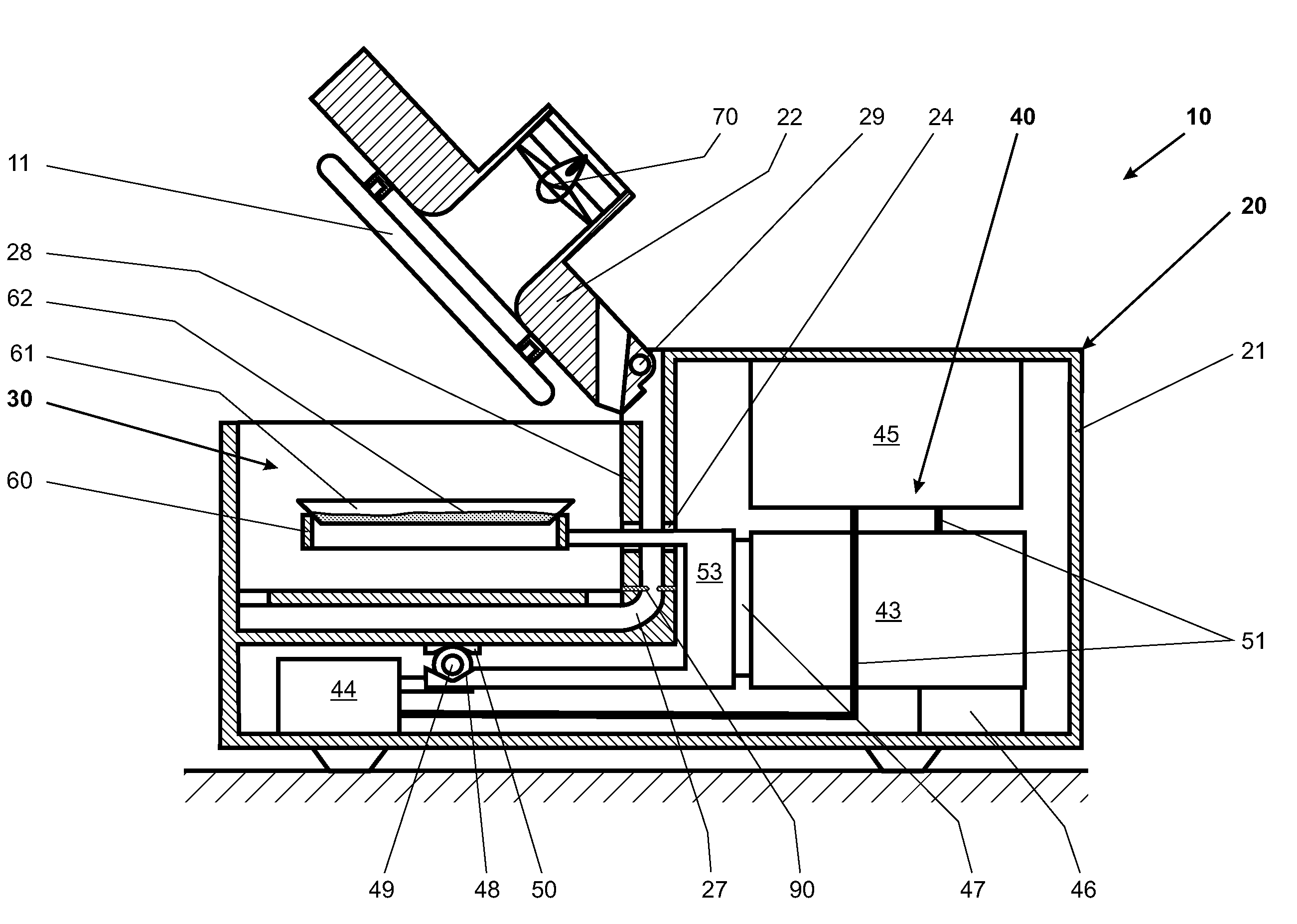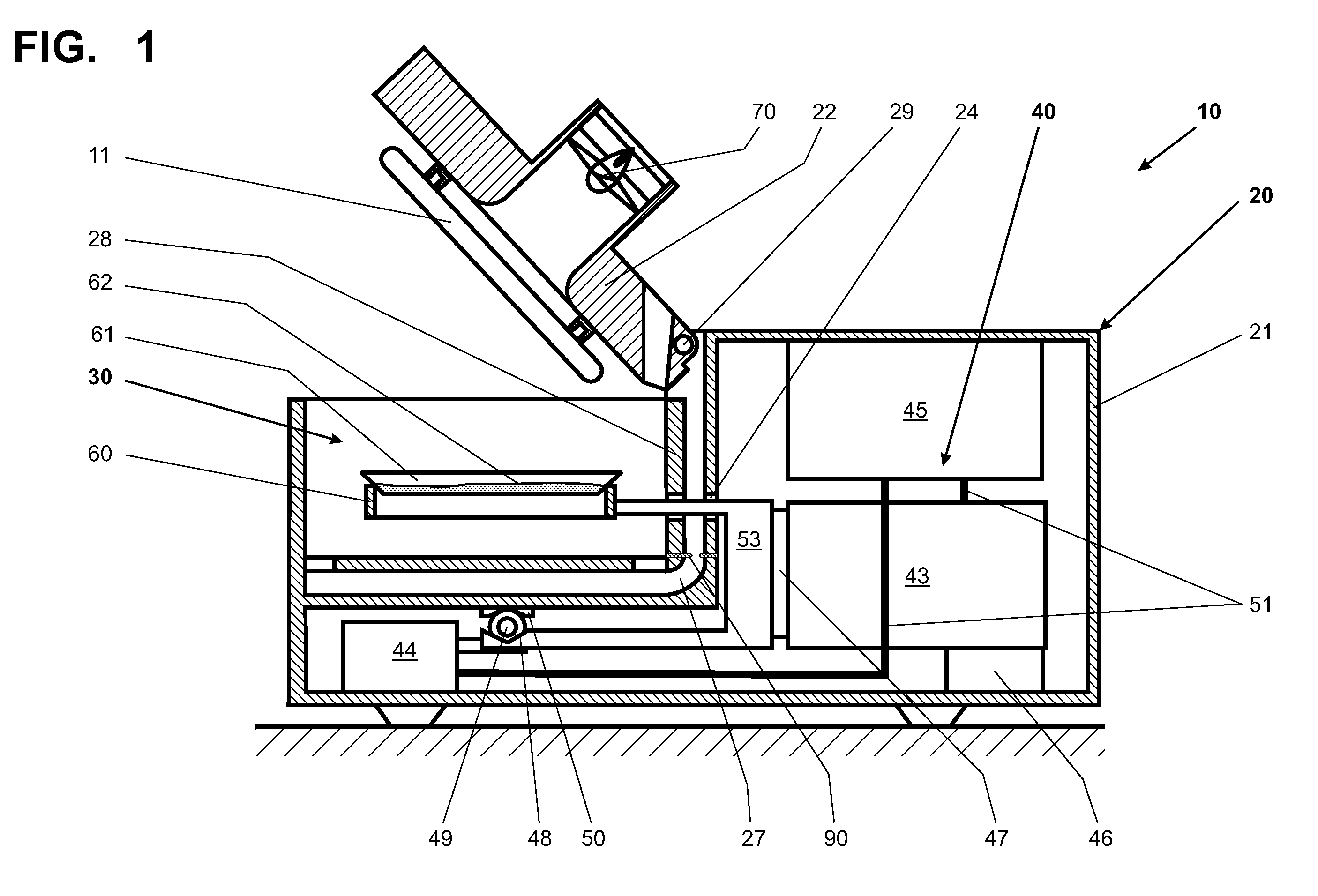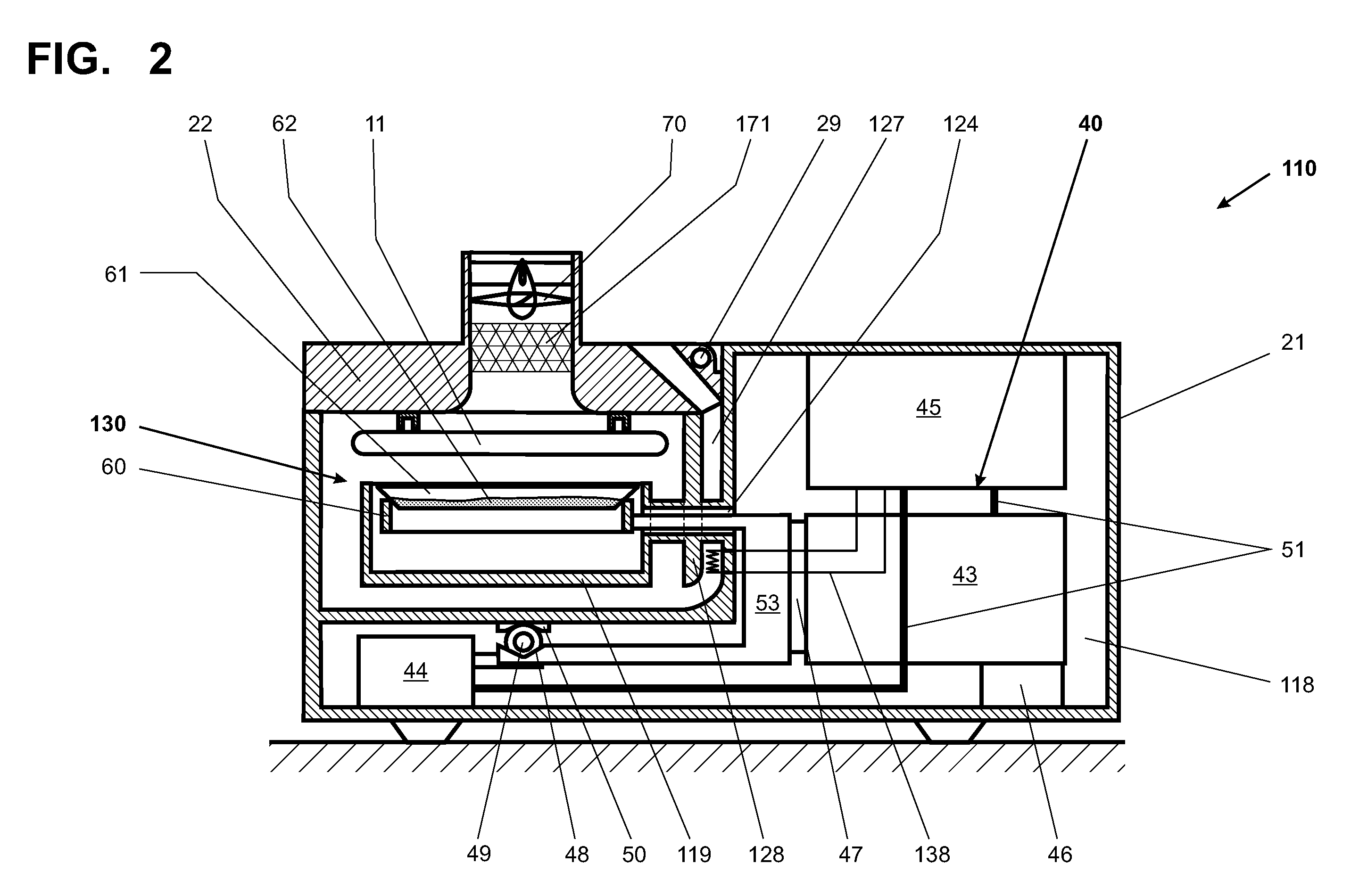Gravimetric moisture measurement instrument
a gravimetric and moisture content technology, applied in the direction of instruments, weighing by absorbing components, weighing apparatus details, etc., can solve the problems of reducing the accuracy of commercially available instruments, affecting the accuracy of commercial instruments, and affecting etc., to achieve the effect of facilitating the operation of putting samples
- Summary
- Abstract
- Description
- Claims
- Application Information
AI Technical Summary
Benefits of technology
Problems solved by technology
Method used
Image
Examples
first embodiment
[0077]FIG. 1, in a sectional view, illustrates a measuring instrument 10 in a The measuring instrument 10 has a housing 20 in which a test compartment 30 is arranged. The housing 20 is divided into a movable housing part 22 and a stationary housing part 21. Arranged in the stationary housing part 21 are a weighing cell 43, a calibration-weight-handling mechanism 44, and at least one electronic module 45, all of which are connected to each other by communicating means 51. The electronic module 45 contains at least one signal-processing module that is not shown in detail, and possibly also a control- and / or regulation module. The weighing cell 43 has at least a stationary portion 46 and a load-receiving portion 47. Known types of weighing cells are for example elastically deforming bodies carrying strain gauges, or weighing cells based on the principle of electromagnetic force compensation, or weighing cells with oscillating strings, capacitative weighing sensors and the like. The st...
second embodiment
[0082]FIG. 2 shows a cross-sectional view of the measuring instrument 110 according to the invention. The measuring instrument 110 itself is to a large extent analogous to the measuring instrument of FIG. 1. The same reference numerals are used for features that are identical, and the features are not described again in detail. In the test compartment 130 of the measuring instrument 110, which is shown in the closed condition in FIG. 2, an interior draft shield 119 is arranged which partially surrounds the sample receiver 60. Atmospheric currents of the gaseous medium can thereby be prevented from influencing the sample receiver 60. As already mentioned in the description of FIG. 1, the passage 24 is configured as a tubular conduit between the test compartment 130 and an interior space 118 of the stationary housing part 21 in which the weighing device 40 is arranged. The connecting member 53 reaches through this passage opening 124 and connects the sample receiver 60 to the load-rec...
third embodiment
[0083]FIG. 3 represents a cross-sectional view of the measuring instrument 210 in a A weighing device 240 arranged in the housing 220 has substantially the same elements as were named above in the description of FIG. 1 for the weighing device 40. The housing 220 is divided into a stationary housing part 221 and a movable housing part 222.
[0084]The weighing device 240 is largely enclosed by the stationary housing part 221. Only a sample receiver 260 which is connected to the weighing device 240 protrudes from the stationary housing part 221 and reaches into the space of the movable housing part 222 when the latter is set in position for performing measurements. Receptacles of different shapes such as sample trays 262, crucibles and the like can be placed on this sample receiver 260 which is ring-shaped in this example.
[0085]The movable housing part 222 forms the outer envelope of a unit which is pivotally connected to the stationary housing 221 so as to allow the movable housing par...
PUM
 Login to View More
Login to View More Abstract
Description
Claims
Application Information
 Login to View More
Login to View More - R&D
- Intellectual Property
- Life Sciences
- Materials
- Tech Scout
- Unparalleled Data Quality
- Higher Quality Content
- 60% Fewer Hallucinations
Browse by: Latest US Patents, China's latest patents, Technical Efficacy Thesaurus, Application Domain, Technology Topic, Popular Technical Reports.
© 2025 PatSnap. All rights reserved.Legal|Privacy policy|Modern Slavery Act Transparency Statement|Sitemap|About US| Contact US: help@patsnap.com



